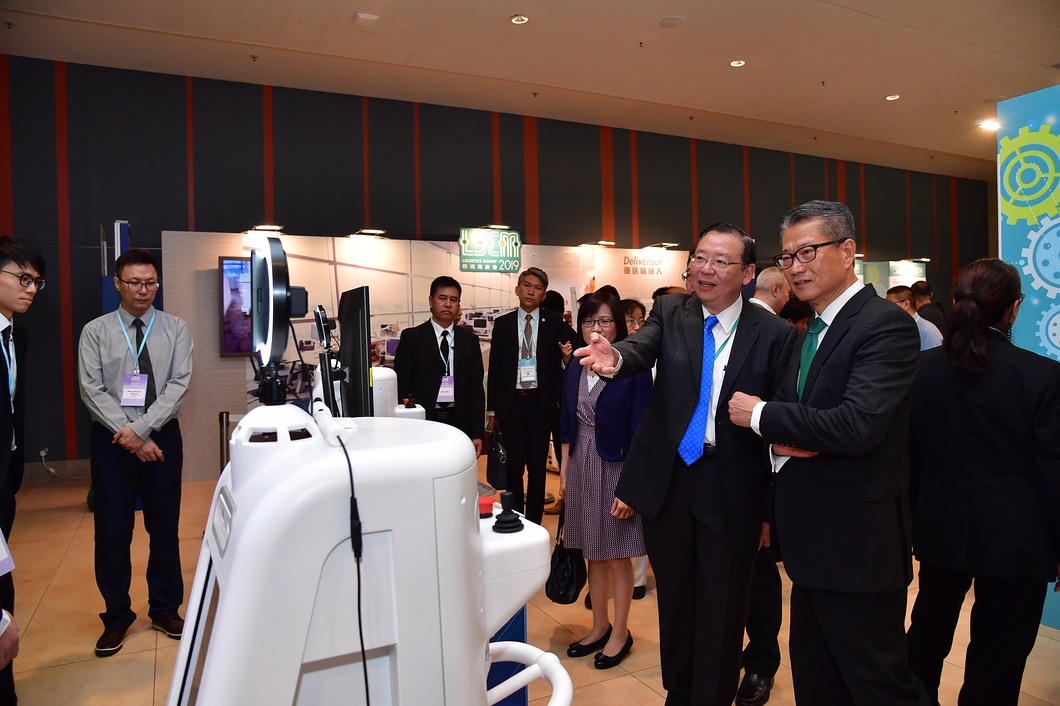Blog
Logistics, Commerce and Information Technology
The US-China trade conflict has been lasting for more than a year, adding pressure to the local trade. Since the end of last year, export has started to drop. Although the cumulative decrease in the first seven months was only 3.9%, the drop in June and July was 9% and 5.7% respectively, which shows the deterioration of the situation. The livelihood of employees is also affected. The latest unemployment rate of the Import and Export, Trading and Wholesales sectors is 2.4%, as against 1.9% at the beginning of the year.
It is difficult for us to control the changes in the external environment, but we can proactively and continuously strengthen our competitiveness, including to enhance the operational effectiveness of local trade, logistics and freight transport industries through application of I&T. This can also consolidate our position as an international shipping and trading hub for the long run.
Last week, the Logistics and Supply Chain MultiTech R&D Centre (LSCM) oragnised the “Logistics Submit 2019” in the Hong Kong Science Park. Around 1000 participants from academia, business and government attended the event to explore how we can make use of I&T to further enhance industries’ competitiveness and create more business opportunities. During the Summit, LSCM showcased the latest innovative technologies developed with its partners, including Deliverbot, Smart Service Robot and Warehouse Lifter, etc., on how they can streamline operation, enhance efficiency and occupational safety for the industries.
 |
In fact, LSCM has been in close collaboration with the trade, universities and public organisations since its establishment in 2006. To date, LSCM has received a total funding support of around $700 million from the Innovation and Technology Fund to conduct more than 160 projects. Some of the research results have been deployed by the public sector for real-life applications. The followings are some quick examples.
(1) E-lock system – Partnering with the Customs and Excise Department, the E-lock Scheme provides seamless clearance and reduces border-crossing time. The Guangdong and Hong Kong Customs announced the launch of the Scheme in March 2016. To date, the Scheme covers more than 60 clearance points in Hong Kong and Guangdong, and provides over 600 routes for conveying cargoes across the boundaries. The Scheme has greatly enhanced the efficiency of customs clearance between Hong Kong and Guangdong.
(2) The Hong Kong-Zhuhai Trade Facilitation Platform – This is a collaborative project with the Zhuhai Electronic Port. By using big data analysis and artificial intelligence (AI) translation engine, the platform provides effective tools and information for logistics industry, enhances the efficiency of customs declaration and facilitates SMEs in the Greater Bay Area to explore business opportunities along the Belt and Road and around the world.
(3) Coordination of Airport Resources Management System – Collaborating with the Hong Kong Airport Authority, the System automatically monitors the availability of trolleys and provides real-time information to facilitate the management of trolleys at the Hong Kong International Airport (HKIA).
(4) Electronic Business Related Arbitration and Mediation (eBRAM) Platform – Working with the Department of Justice, eBRAM is an electronic platform for e-arbitration, mediation, negotiation and deal-making by using AI and other related technologies. To SMEs, eBRAM offers a safe, efficient and affordable platform for dispute resolution. This is conducive to a friendly business environment and promotes disputes resolution. Indeed, various international and regional organisations are taking active steps to develop similar online service platforms. On this, Hong Kong has its unique strength given the setting up of the Hong Kong International Arbitration Centre in earlier years. It is an opportune time for us to expedite the development of the online platform. I have therefore allocated $150 million in this year’s Budget to support the development and initial operation of the eBRAM platform.
Besides making good use of I&T, we should also upgrade our hardware. We are going to establish a premium logistics centre in the HKIA cargo precinct. It will be the third largest warehouse in Hong Kong, which can promote the development of high value third-party logistics services in Hong Kong. The new centre is scheduled for opening in 2023. Moreover, we are actively considering the redevelopment of the Air Mail Centre at HKIA by installing advanced facilities to enhance its efficiency and capacity. The development of the Third Runway System is also in full swing. With the completion of the System, the annual maximum handling capacity of HKIA is expected to reach 100 million passengers and 9 million tonnes of cargo, meeting the demand in the coming ten years.
All of the above measures would improve Hong Kong’s efficiency in trade, logistics, warehousing, transportation and customs clearance in different aspects. Although we cannot resolve the prevailing challenges in a snap, if we continue to improve and innovate in a conscientious and pragmatic manner and build a more efficient logistics and related systems, we can surely create a more favorable environment for the industries to flourish, at present and in future.
September 22, 2019